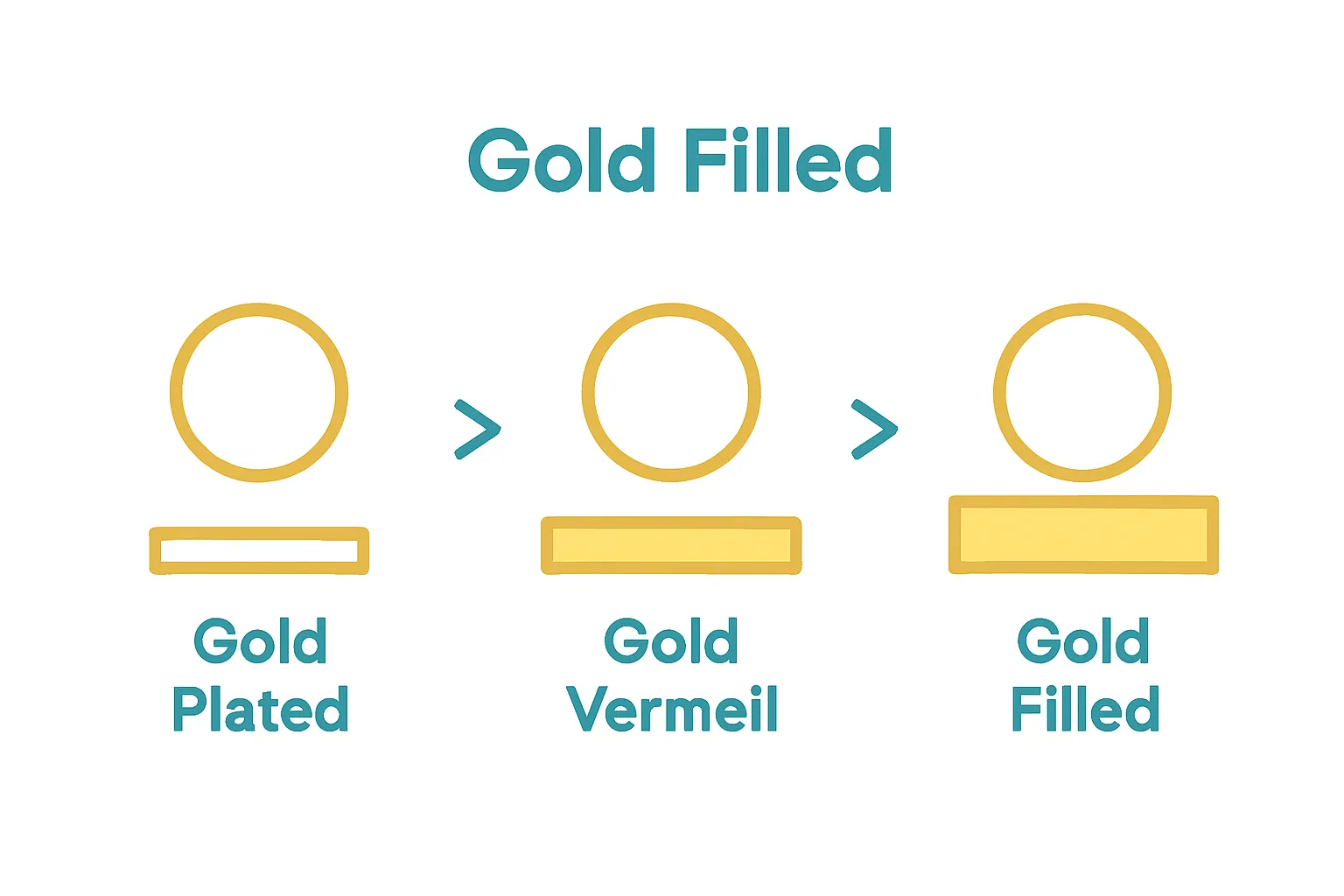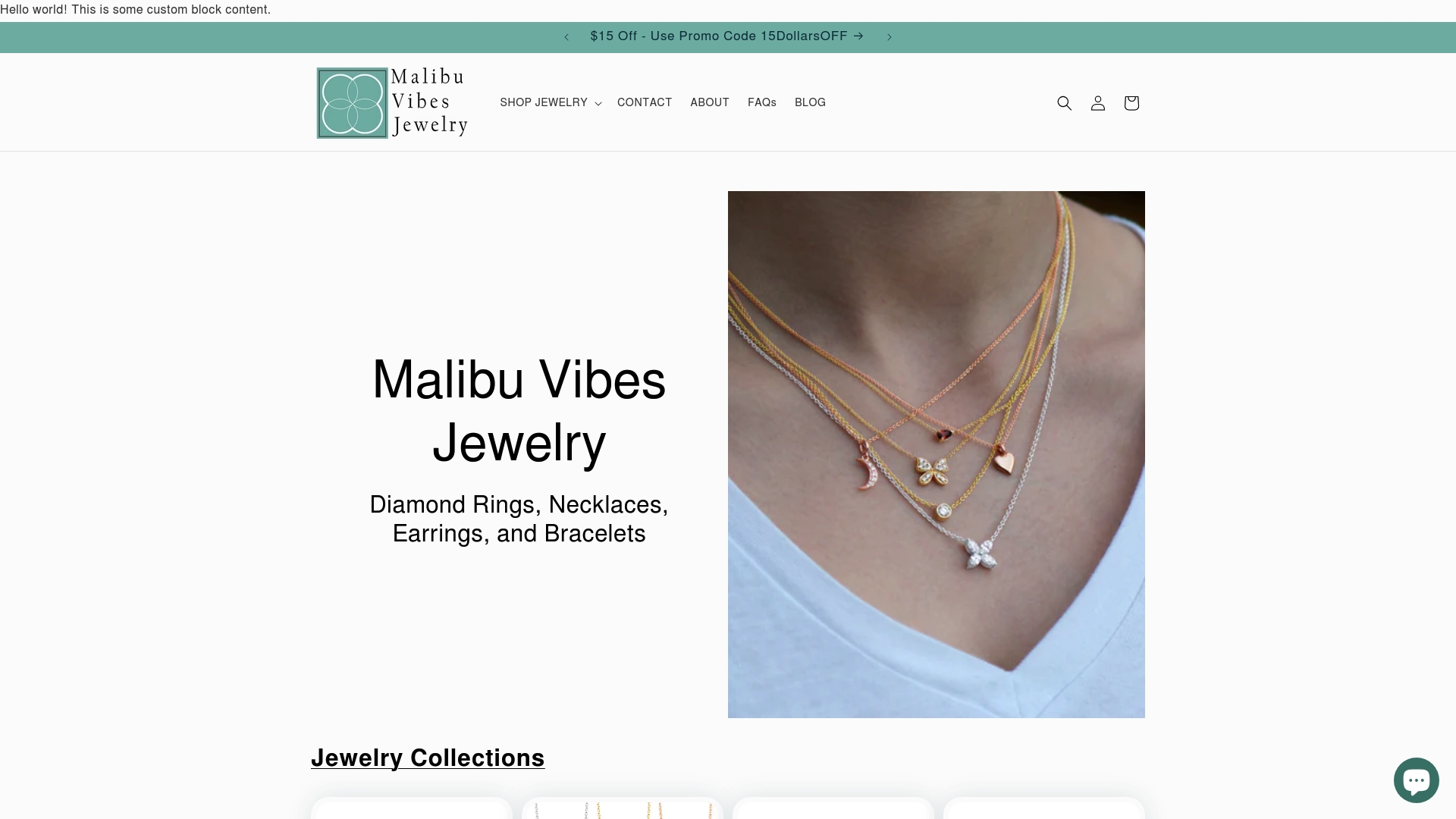Gold jewelry holds a unique charm and elegance, and not every sparkle comes with a sky-high price. Most people do not realize that gold-plated jewelry can have a gold layer as thin as 0.175 microns, barely visible to the naked eye. You would think something so delicate would hardly matter, but that thin glimmer is what bridges the gap between luxury and practicality for millions who want the look and feel of real gold without emptying their wallets.
Table of Contents
- Defining Gold Plating: The Basics Of The Process
- The Importance Of Gold Plating In Fine Jewelry
- How Gold Plating Works: Understanding The Technique
- Types Of Gold Plating And Their Unique Qualities
- Caring For Gold Plated Jewelry: Key Considerations
Quick Summary
| Takeaway | Explanation |
|---|---|
| Gold plating enhances jewelry affordability. | It allows the creation of luxurious-looking pieces without the high costs of solid gold. |
| Gold plating requires careful maintenance. | To preserve its appearance, avoid harsh chemicals and store items properly to prevent scratches. |
| Thickness of gold layer matters. | The thickness, usually between 0.175 to 2.5 microns, affects durability and wear resistance. |
| Gold plating provides protective benefits. | The gold layer protects base metals from oxidation and corrosion, extending jewelry lifespan. |
| Different gold plating types exist. | Options like traditional, vermeil, and gold-filled offer varying qualities and durability for consumers. |
Defining Gold Plating: The Basics of the Process
Gold plating represents a sophisticated jewelry technique where a thin layer of gold is applied to the surface of another metal, transforming its appearance and perceived value. This process allows jewelry designers and manufacturers to create pieces that look luxurious without the substantial cost of solid gold.
The Chemical Magic Behind Gold Plating
At its core, gold plating is an electrochemical process involving precise metal deposition. Researchers at the Gemological Institute of America explain that this method involves using electrical currents to bond a microscopic layer of gold onto a base metal. The base metal could be copper, silver, brass, or even another precious metal, creating a versatile technique for jewelry crafting.
The plating process typically follows a specific sequence:
- Thoroughly cleaning the base metal surface to remove any contaminants
- Preparing an electrolytic solution containing dissolved gold ions
- Applying an electrical current that causes gold ions to adhere uniformly to the metal surface
- Controlling thickness and ensuring consistent gold coverage
Understanding Gold Plating Characteristics
Gold plating offers several advantages for jewelry makers and consumers. The thickness of the gold layer can vary, typically ranging from 0.175 to 2.5 microns. Thicker layers generally provide longer-lasting color and more resistance to wear. For those interested in understanding related jewelry techniques, read more about gold-filled jewelry options.
Consumers should understand that while gold plating creates a beautiful finish, the layer is relatively thin. Over time, with frequent wear and exposure to chemicals, the gold layer can gradually wear away, revealing the underlying metal. This characteristic makes gold-plated jewelry more affordable but also requires gentle care to maintain its appearance.
The Importance of Gold Plating in Fine Jewelry
Gold plating serves as a sophisticated technique that bridges affordability with aesthetic elegance in the world of fine jewelry. By applying a delicate gold layer onto less expensive base metals, designers can create stunning pieces that capture the luxurious appearance of solid gold without the hefty price tag.
Economic and Aesthetic Advantages
Research from jewelry manufacturing experts highlights that gold plating offers multiple strategic benefits for jewelry makers and consumers. The technique allows jewelry designers to experiment with design and styling while maintaining cost effectiveness. Gold plating transforms ordinary metals into visually stunning accessories, providing an accessible pathway to owning pieces that look and feel premium.
Key advantages of gold plating include:
- Creating high-end aesthetic appearances at a fraction of solid gold pricing
- Providing design flexibility for jewelry artisans
- Offering consumers more accessible luxury options
- Enabling intricate design work impossible with solid gold
Protecting and Enhancing Metal Surfaces
Beyond aesthetic appeal, gold plating serves crucial protective functions. The thin gold layer acts as a barrier, preventing base metals from oxidation and corrosion. This protective quality extends the jewelry’s lifespan and maintains its original brilliance. Learn more about investment strategies for gold jewelry to understand how gold plating contributes to long-term value.
Gold plating also offers versatility across different jewelry types. Whether applied to silver earrings, copper bracelets, or brass pendants, the technique provides a uniform, attractive gold finish that enhances the underlying metal’s inherent qualities. Consumers can enjoy the visual warmth of gold without compromising on durability or breaking their budget.
How Gold Plating Works: Understanding the Technique
Gold plating represents a precision electrochemical process that transforms ordinary metal surfaces into gleaming, gold-like finishes. This sophisticated technique requires intricate scientific principles and carefully controlled industrial procedures to achieve a seamless, durable gold layer.
The Electroplating Fundamentals
Metallurgical research from engineering experts reveals that gold plating operates through an electrolytic deposition method. The process involves suspending the base metal and gold source in a specialized chemical solution, then applying an electrical current that causes gold ions to migrate and adhere uniformly to the metal surface.
Key components of the electroplating process include:
- A conductive base metal substrate
- A gold-containing electrolyte solution
- Precise electrical current control
- Specialized plating equipment
- Carefully monitored temperature and chemical concentrations
Technical Precision and Metal Preparation
Before gold plating begins, the base metal undergoes meticulous preparation. This critical stage involves multiple precision cleaning steps to ensure perfect adhesion:
- Thorough degreasing to remove organic contaminants
- Acid or alkaline cleaning to eliminate surface oxidation
- Potential nickel or other intermediate metal layer application
- Microscopic surface smoothing to create optimal bonding conditions
For those interested in exploring related gold jewelry techniques, understanding these intricate preparation steps reveals the complexity behind seemingly simple jewelry finishes. The final gold layer typically ranges from 0.5 to 2.5 microns thick, depending on the desired durability and aesthetic requirements. Jewelers carefully calibrate electrical current, solution composition, and immersion time to achieve consistent, high-quality gold plating that meets precise manufacturing standards.
This table summarizes the key steps in the gold plating process, providing a clear overview of actions and their purpose as described in the article.
| Step | Action | Purpose |
|---|---|---|
| Surface Cleaning | Remove contaminants and degrease the base metal | Ensure adhesion and quality finish |
| Electrolyte Preparation | Prepare solution with dissolved gold ions | Ready the medium for gold deposition |
| Electrochemical Bonding | Apply electrical current to adhere gold ions to metal surface | Uniformly deposit gold on base |
| Thickness Control | Regulate current, time, and solution composition | Achieve consistent gold coverage and durability |
| Post-plating Inspection | Examine finish and thickness | Ensure quality and desired appearance |
Types of Gold Plating and Their Unique Qualities
Gold plating encompasses several sophisticated techniques, each offering distinct characteristics and aesthetic appeals. Understanding these variations helps jewelry enthusiasts make informed decisions about their precious metal investments and accessories.
Classic Gold Plating Varieties
Gemological experts distinguish multiple gold plating categories based on thickness, composition, and application method. The primary types include traditional gold plating, gold vermeil, and gold-filled techniques, each delivering unique visual and durability properties.
Key distinctions among gold plating types include:
- Thickness of gold layer applied
- Base metal composition
- Manufacturing process complexity
- Expected longevity of the finish
- Price point and accessibility
Detailed Gold Plating Classifications
Traditional gold plating typically involves a thin layer (0.175 to 0.5 microns) electrochemically deposited onto base metals like brass or copper. Gold vermeil represents a premium variant, requiring a substantially thicker gold layer (minimum 2.5 microns) specifically applied over sterling silver. For deeper insights into gold quality standards, understanding these nuanced differences becomes crucial for discerning jewelry collectors.
Gold-filled jewelry presents another intriguing category, where a mechanical bonding process creates a significantly more substantial gold layer.
 Unlike standard plating, gold-filled pieces contain 5% or more gold by weight, offering enhanced durability and a more substantial gold presence compared to traditional electroplated alternatives. This technique provides consumers a middle ground between affordability and luxurious appearance, making fine gold aesthetics more accessible to a broader audience.
Unlike standard plating, gold-filled pieces contain 5% or more gold by weight, offering enhanced durability and a more substantial gold presence compared to traditional electroplated alternatives. This technique provides consumers a middle ground between affordability and luxurious appearance, making fine gold aesthetics more accessible to a broader audience.
The table below compares the key types of gold plating discussed in the article, outlining their base metal, typical gold thickness, method, and main benefits.
| Type of Gold Plating | Base Metal | Typical Gold Layer Thickness | Method | Main Benefit |
|---|---|---|---|---|
| Traditional Gold Plating | Brass, Copper, Others | 0.175 - 0.5 microns | Electrochemical deposition | Affordable, gold-like appearance |
| Gold Vermeil | Sterling Silver | Minimum 2.5 microns | Electroplating (must be over silver) | Thicker, premium finish |
| Gold-Filled | Brass (usually) | 5% or more by total weight | Mechanical bonding | Greater durability, substantial gold |

Caring for Gold Plated Jewelry: Key Considerations
Gold plated jewelry requires specialized care to maintain its lustrous appearance and prevent premature wear. Understanding the delicate nature of this precious finish helps owners protect their investment and preserve the jewelry’s aesthetic appeal for years.
Protecting the Delicate Gold Layer
Jewelry conservation experts emphasize the importance of minimizing exposure to potential damaging elements. The thin gold layer demands careful handling and strategic protection to prevent unnecessary degradation and maintain its original brilliance.
Critical environmental factors to avoid include:
- Direct contact with harsh chemicals
- Prolonged exposure to moisture
- Extreme temperature variations
- Abrasive surfaces and materials
- Cosmetic and personal care product interactions
Maintenance and Storage Strategies
Proper storage plays a crucial role in preserving gold plated jewelry’s integrity. Individuals should store pieces individually in soft cloth pouches or separate compartments to prevent scratching and minimize friction. Learn more about gold jewelry care techniques, which can help extend the life of your cherished pieces.
When cleaning gold plated jewelry, use extremely gentle methods. A soft, lint-free cloth can remove surface dust and oils without compromising the delicate gold layer. Avoid commercial jewelry cleaners, ultrasonic devices, and abrasive materials that could potentially strip away the thin gold coating. Professional jewelers recommend periodic professional inspection to assess the plating’s condition and recommend potential re-plating if significant wear becomes apparent.
Discover Gold Plated Luxury with Confidence
Are you looking for jewelry that captures timeless elegance without the high cost of solid gold? The article explained how gold plating offers luxurious style at an accessible price, but also highlighted challenges like wear over time and the need for gentle care. At Malibu Vibes Jewelry, we understand the importance of owning fine pieces that combine beauty, durability, and thoughtful craftsmanship. We use expert techniques, premium precious metals, and handcrafted attention to detail to ensure that your gold plated jewelry always shines at its best.

Now is the perfect moment to elevate your collection with styles designed for real life. Enjoy a worry-free experience with our dedication to quality and discover how our curated fine jewelry blends California luxury with everyday wear. Explore our collections today and let your next favorite piece make every day feel special. Visit Malibu Vibes Jewelry to shop luxury, redefined.
Frequently Asked Questions
What is gold plating?
Gold plating is a jewelry technique that involves applying a thin layer of gold to the surface of a base metal, enhancing the aesthetics and perceived value of the jewelry piece.
How does the gold plating process work?
Gold plating works through an electrochemical process where electrical currents help bond a layer of gold ions onto a clean base metal surface, creating a durable and attractive finish.
What are the different types of gold plating?
The main types of gold plating include traditional gold plating, gold vermeil (which has a thicker gold layer applied over sterling silver), and gold-filled jewelry (which contains a significant amount of gold by weight, offering enhanced durability).
How should I care for gold plated jewelry?
To care for gold plated jewelry, avoid exposing it to harsh chemicals, moisture, and abrasive materials. Store it individually in soft cloth to minimize scratches, and clean it gently with a soft, lint-free cloth.
Recommended
- Understanding What is Gold Vermeil for Jewelry Lovers – Malibu Vibes Jewelry
- What is Gold Filled Jewelry? Understanding Its Value – Malibu Vibes Jewelry
- Understanding Why Invest in Gold Jewelry: A Comprehensive Guide – Malibu Vibes Jewelry
- What is 14k Gold? Understanding Its Beauty and Value – Malibu Vibes Jewelry



